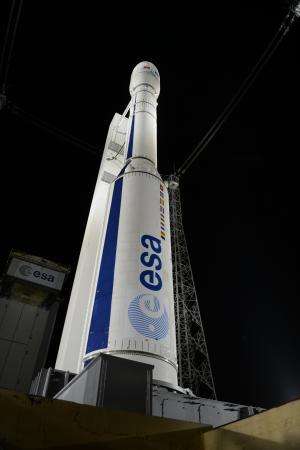Stepping up Vega launcher production

Such is the success of Europe's Vega small launcher that an order was signed today in Rome for the production of ten more vehicles. These will be launched over three years from the end of 2015.
The contract was signed by Stéphane Israel, Chairman and CEO of Arianespace, and Pierluigi Pirrelli, CEO of European Launch Vehicle (ELV).
The signing ceremony took place during the 31st Franco-Italian summit, under the auspices of Italian Prime Minister Enrico Letta and the President of France, François Hollande with France's Prime Minister Jean-Marc Ayrault and in the presence of the respective Research Ministers, Geneviève Fioraso for France and Mario Chiara Carrozza for Italy.
This order supplements the five rockets already ordered in 2010 for the initial exploitation phase of the launch system within ESA's Vega Research and Technology Accompaniment (VERTA) programme to demonstrate the system's flexibility.
At the same time, ESA, Arianespace and ELV concluded a Memorandum of Understanding specifying the general framework of this activity and the sharing of risks and responsibilities in the exploitation phase of the Vega launch system until 2018 and the transition from VERTA. This was signed by Stéphane Israel, Pierluigi Pirrelli and Antonio Fabrizi, ESA Director of Launchers.
Vega is operated in conjunction with the heavy-lift Ariane 5 and medium-lift Soyuz launchers at Europe's Spaceport in Kourou, French Guiana. Vega is the ideal launcher for small scientific and Earth observation missions in low or Sun-synchronous orbits.
Altogether, seven ESA Member States – Italy, France, Spain, Belgium, the Netherlands, Switzerland and Sweden – are contributing to the programme.
The industrial prime contractor is ELV SpA, 70% of which is owned by Avio SpA and 30% by Italy's ASI space agency.
ELV is responsible for Vega's development, production, delivery and launch integration. As the future Vega service provider, Arianespace is responsible for launch operations.
The acts signed today in Rome are key in offering competitive Vega flight opportunities to ESA missions and other users until the end of 2018.
Provided by European Space Agency





















